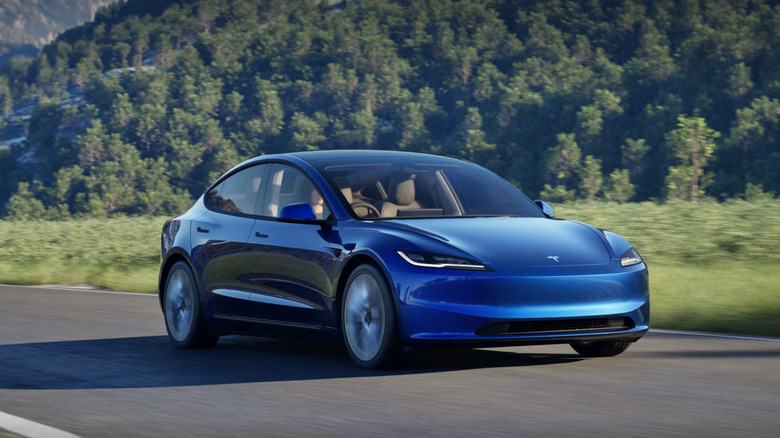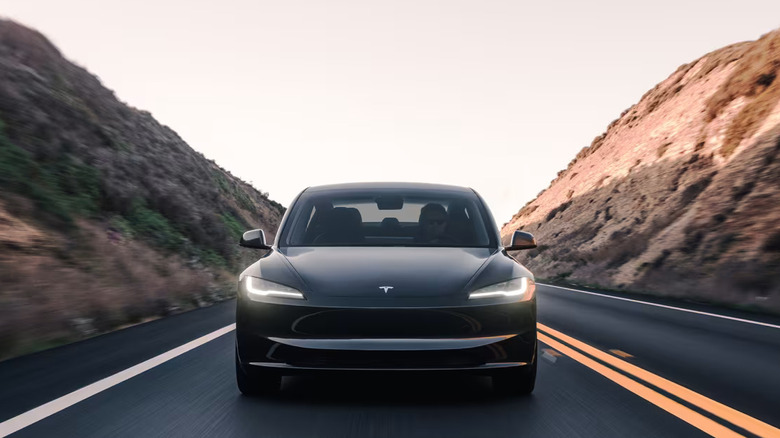This Is The Most Expensive State To Drive An EV In (And It's Not Even Close)
One of the big positives about owning an electric car is that you don't have to buy gas. That means no expensive fill-ups and no running late for work on a Monday morning, and clocking that the range still says '5 miles' from Friday. Hopefully, it also means a little more cash in your pocket, as generally speaking, you'll save money by using an electric car instead of a gas car when it comes to charging versus filling up.
However, there are many variables to this. It depends on what type of car you drive, what sort of driving you do, where you would fill or charge up, and, indeed, what state you live in. Gas and electric prices vary from state to state. Therefore, it is worth knowing what the cheapest and most expensive states for electric car owners are. And while states like New Jersey, Oregon, Vermont, and Washington offer great value, one state in particular is outlandishly expensive when it comes to charging.
That state is Hawaii. Electricity here isn't just slightly more expensive than in other states, it's in a league of its own. Data collected by the U.S. Energy Information Administration in March 2025 shows electricity costing 41.11 cents per kilowatt-hour (kWh) in Hawaii, in comparison to a national average of 17.11. Interestingly, though, while the national average has increased by 2.58% since March 2024, the price in Hawaii dropped by a significant 9.15%. In March 2024, Hawaiians were paying 45.25 cents per kWh. By comparison, the next most expensive state — Connecticut — was paying 'just' 29.12 cents per kWh hour in 2024, and 32.55 in 2025.
Here's what it means for EV drivers in Hawaii
So, it costs a chunk more to turn the lights on and to use a hairdryer in Hawaii, but what does this actually mean for drivers of electric cars? Do the high electricity costs mean they would be better off just paying for gas instead?
Let's do some math to work that out. The Federal Highway Administration reports that Hawaiians drive an average of 10,980 miles per year, so we'll use this for our annual estimate, which works out to roughly 30 miles per day. Next, we'll pick a car — the 2025 Tesla Model 3. This sports a 79.7 kWh battery capacity in Long Range RWD trim, and a range of 363 miles. So, using that logic, just over 30 charges will be required throughout the year, on the basis that you get 363 miles of range each time, whereas in the real world, you will likely top up the range each evening. With a battery capacity of 79.7 kWh and energy costs of 41.11 cents per kWh, that gives us a total cost per full charge of $32.76. Over 30 charges throughout the year, that's an annual charging cost of $982.80.
For 10,980 miles, there or thereabout, that's still cheaper than what you'd likely be paying for gas, even when behind the wheel of something decidedly eco-friendly. The Bureau of Transportation Statistics tells us that, as of May 2025, the average price of gas was $3.15 per gallon. For this estimate, we'll use the 2025 Toyota RAV4, which returns 30 MPG combined. Punch those figures into a calculator, and over the same 10,980 miles, we get a total cost of $1,152.90 — or $170.10 more than the Hawaiian Tesla estimate.
This is why electricity is so expensive in Hawaii
So, even though Hawaiians get their electricity at frankly extortionate rates in comparison to the rest of the U.S., simple math tells us that they would still be financially better off with a Tesla over a Toyota. Of course, there are many variables which would affect the real-world results, such as the heaviness of the driver's right foot, weather conditions, driving conditions, and when they would be charging — rather than our quick estimate of charging from 0% to 100% (you'd need to be rather lucky to arrive at a charging point 30 times per year just as your range depleted). Oh, and then there are the surprising costs of actually maintaining an electric car, added in, too.
What this does, though, is shine a spotlight on two important factors. Firstly, electric cars are still cheap to run in comparison to gas cars, even with rising energy costs. And, secondly, Hawaiians pay an awful lot for their electricity. There are some good reasons for this, though, and the primary factor is Hawaii's remoteness. Oil must be imported in, and used to power the state's generators, and the price of this fuel is largely what dictates the high cost for end users. That and, because there are no nearby utility companies on which citizens can rely upon in the event of an issue, the state must purchase enough oil so that it can ensure system dependability if a problem does arise.


